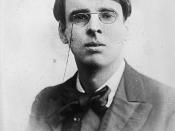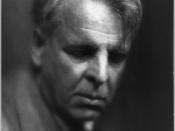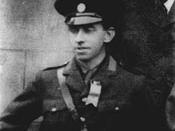Probing Yeats's Mysticism-Colored Nationalism
In Easter 1916
William Butler Yeats is considered to be one of the greatest Irish poets in English language, and his poetic achievement stands at the center of modern literature. He had a very long poetic career, stretching from the 1880s to the 1930s, and had experienced a slow and painful change in his poetic creation, starting in the romantic tradition and finishing as a matured modernist poet. Easter 1916 was one of his great works dealing with Irish national problem. The poem was written in October 1916 just after the Easter Rising, the armed insurrection at the Dublin Post Office that signaled the beginning of the modern Irish independence movement. As a result, a number of the nationalists were executed after the Rising. So Yeats called it " a terrible beauty". Obviously, Yeats's attitude toward the heroic event was ambiguous and even critical. As a moderate nationalist, he has been deeply involved in Irish politics, and held different ideas with the radical nationalists as how to regain Irish independence.
He didn't agree to resort to violence, on the contrary, he thought that Irish people should revive Ireland's national culture in order to win back their country's independence. In thinking over Ireland's way to independence, Yeats had actually been influenced by his philosophy of mysticism. Many of Yeats's poetry had been based on his mystical system of belief such as A Vision (1925), The Tower (1928), The Winding Stair (1933) etc. Even from his poem about Irish national problem such as Easter 1916, we can get the track of his mysticism that provided to his poem with a special color. In reading Easter 1916, what come into the readers' mind should be Yeats's national emotion as well as his philosophy, i.e. mysticism. The poem is a...


